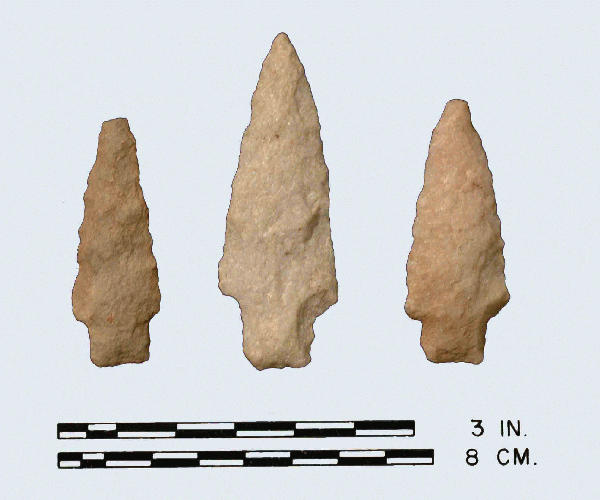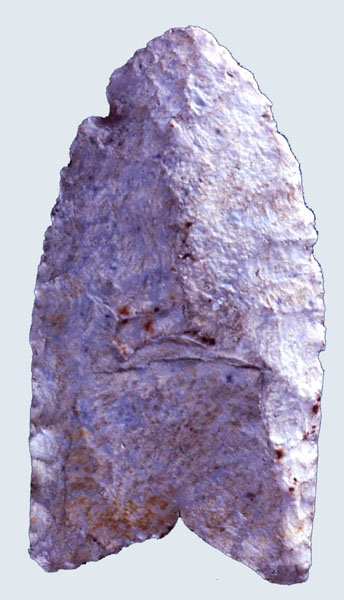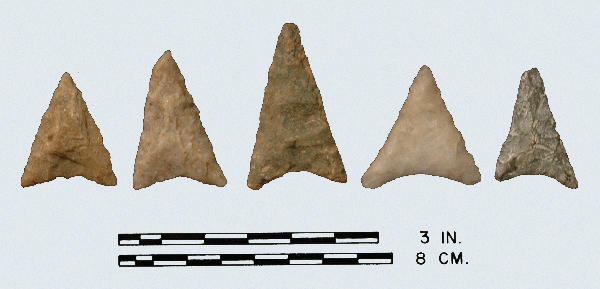
Bare Island: all quartzite.
Type Square Late-Archaic
Defining Attributes
The Bare Island is a medium to large, finely flaked, symmetrical point, with a slender isosceles triangular blade and a straight base. The stem is straight with parallel sides.
Chronology
The Bare Island point dates to the Late Archaic period, 2500 to 1600 BCE. McAvoy (1997) places the point (no radiocarbon dates) along the Nottoway River between 2300 to 2000 BCE
Description
- Blade: The blade is symmetrical in the form of an isosceles triangle. Edges are generally slightly convex; however, edges on larger points tend to be straighter. The tip is sharply pointed and on center with the stem, although there is no distinct medial ridge. Shoulders are often slightly rounded and well defined. An obtuse angle is formed between the blade and stem, although in some examples a right angle is present.
- Base: The base is usually straight, but sometimes it is slightly convex. Often, the stem edges and base exhibit traces of grinding. The stem is always narrower than the blade, and the long sides of the stem are parallel forming a nearly perfect square or rectangle.
- Size: Length ranges from 45 to 83 mm with an average of 69 mm. Width ranges from 16 to 30 mm with an average of 21 mm. Thickness ranges from 8 to 15 mm with an average of 12 mm.
- Technique of manufacture: Moderately well made by percussion chipping.
Discussion
Kinsey (in Ritchie 1971) notes that the similarities between the Bare Island point and a component of the Accokeek Creek site on the lower Potomac River are striking. According to Kinsey, it may be that the antecedent for this type lies in the Virginia and Carolina Piedmont and the Savannah River in Georgia. Bare Island points (straight stem) have been described as closely related to the Clagett point type (constricted stem) and as a narrow variant of the Savannah River point type.
Defined in Literature
Kinsey originally defined this type in 1959 based on points recovered from the Kent-Hally Site on Bare Island in Pennsylvania. His description of this type was re-published by Ritchie in 1961 (revised 1971). Stephenson (1963) also discusses this point type based on points recovered from the Accokeek Creek Site in Maryland.
References



